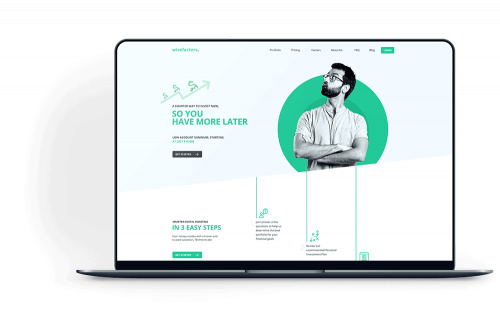
Key Aspects of Website Design That Effect Your Website's Efficiency
In today's digital age, the performance of a website hinges on a number of key layout components that can either raise or weaken its success. From the speed at which a web page tons to its versatility across numerous tools, each element plays an essential role in shaping user experience. Exactly how do these aspects interconnect to enhance a site's overall efficiency?
Loading Rate Optimization
In the busy electronic landscape, maximizing packing speed is vital for improving user experience and preserving reliable web site efficiency. The importance of loading rate can not be overstated, as also a one-second delay can considerably reduce individual contentment and rise bounce prices. Reliable optimization of packing speed entails a diverse method, incorporating both technological and material techniques.
%20%5B60%25%5D.jpg)
An additional important approach is enhancing pictures by compressing them without compromising quality. Web Design Gauteng. This can be accomplished with devices and plugins that immediately change picture size and resolution. Applying content shipment networks (CDNs) can additionally distribute web content across different servers around the world, ensuring quicker accessibility based on individual closeness
Lastly, decreasing server reaction time and allowing compression with tools like Gzip can further enhance loading speed. By prioritizing these aspects, websites can ensure swift, seamless communications, eventually improving user interaction and retention.
Mobile Responsiveness
Acknowledging the common presence of mobile phones, guaranteeing mobile responsiveness is crucial for modern-day website design. With an increasing variety of individuals accessing sites through mobile phones and tablets, a responsive design guarantees that a website adjusts seamlessly to various display sizes and alignments. This adaptability improves customer experience, fostering longer interaction and possibly greater conversion rates. An internet site that stops working to provide effectively on mobile devices threats alienating a considerable portion of its target market, causing enhanced bounce prices and decreased customer fulfillment.
Mobile responsiveness is not simply a fad; it is an important component that internet search engine, such as Google, take into consideration when ranking web sites. A receptive style is integral to search engine optimization (SEO), as it improves site accessibility and usability, variables that add to much better search engine visibility. Furthermore, responsive layout enhances upkeep initiatives by removing the requirement for different desktop computer and mobile versions, making sure consistency across all platforms.
Integrating adaptable grids, liquid images, and CSS media inquiries are fundamental methods in creating a mobile-responsive layout. These elements make sure that web content is displayed efficiently, no matter the tool. Inevitably, prioritizing mobile responsiveness is a strategic choice that significantly affects a website's performance and general success.
User-Friendly Navigation
A well-structured navigating system directly affects individual retention and interaction, as site visitors are much more most likely to remain longer if they can quickly access read this post here what they need. Clear, instinctive navigating minimizes cognitive tons, permitting customers to focus on material rather than how to discover it.
Overcomplicated menus with too much choices can bewilder individuals, leading to frustration and potential desertion. Organizing web content hierarchically and making use of sensible classification can even more help in instinctive navigating.
Incorporating consistent navigation elements across all web pages is another essential practice. This uniformity promotes experience, enabling individuals to anticipate where they can find certain information, hence boosting their convenience and convenience of use. Furthermore, integrating search capability supplies an alternative for individuals that prefer straight access to information.
Visual Design and Aesthetics
While user-friendly navigation guarantees smooth access to details, the impact of aesthetic style and visual appeals on website performance can not be underrated. The visual allure of a web site works as the impression for visitors, establishing the tone for their whole user experience. A well-designed site needs to stabilize aesthetic appeals with performance, guaranteeing that aesthetic components boost as opposed to take away from individual engagement.
Color schemes, typography, and imagery are critical elements of visual style. These aspects should be constant with the brand's identification, fostering acknowledgment and trust. A harmonious color combination can stimulate specific feelings, while legible and clear typography improves material access. Images must be high-grade and pertinent, supporting the site's messaging without frustrating the user.
Minimal layout concepts often bring about boosted internet site efficiency. By minimizing mess and concentrating on important components, individuals can navigate more intuitively and find info successfully. Furthermore, structured layout adds to faster loading times, an important factor in retaining site visitor passion.
Ultimately, a cosmetically pleasing web site is most likely to engage site visitors, motivating longer website check outs and raised communications. By focusing on thoughtful aesthetic design, organizations can produce a welcoming electronic visibility that enhances their overall goals.
SEO-Friendly Structure
Crafting an SEO-friendly structure is indispensable to enhancing an internet site's exposure in search engine results. An orderly website style not only facilitates simplicity of navigation for customers but additionally aids online search engine spiders in effectively indexing content. This starts with a sensible link framework, making use of keyword-rich and detailed Links that supply clear paths to web content. In addition, employing an ordered framework with a well-defined power structure of pages makes sure that crucial web pages obtain the attention they are worthy of.
Navigating is an additional critical element of an SEO-friendly framework. A clear, regular menu assists individuals find info rapidly while signifying to internet search engine the importance and significance of each web page. Applying published here breadcrumb navigation even more helps both individuals and internet search engine in recognizing the site's read this design and context.
Guaranteeing that all aspects of the web site are maximized for mobile users is essential, as search engines prefer mobile-friendly styles. By focusing on these essential components, internet sites can attain better search positions and user complete satisfaction.

Verdict
Enhancing vital aspects of internet layout is important for boosting website efficiency. Prioritizing packing rate, mobile responsiveness, and user-friendly navigating dramatically improves customer contentment and involvement, decreasing bounce rates and preserving site visitors.
In the hectic electronic landscape, enhancing packing rate is vital for enhancing customer experience and keeping reliable internet site efficiency. With an enhancing number of users accessing websites through tablets and smartphones, a receptive design guarantees that a website adapts seamlessly to various screen sizes and alignments. A site that stops working to provide appropriately on mobile devices dangers estranging a considerable portion of its target market, leading to increased bounce prices and reduced user fulfillment.
Guaranteeing that all aspects of the web site are optimized for mobile individuals is crucial, as search engines prefer mobile-friendly designs. By concentrating on these key components, sites can attain better search positions and user satisfaction.